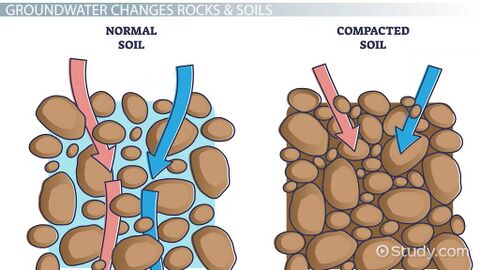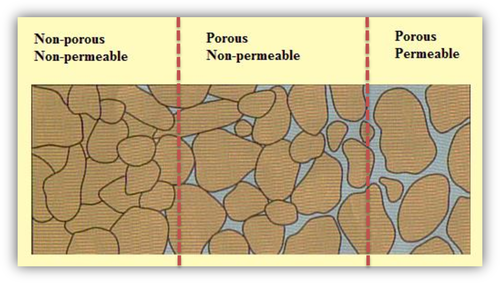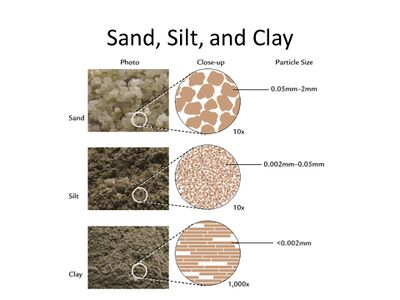Porosity
Definition and Background
Porosity is concentration of the spaces between particles of a material. In soil science, pore spaces are indicative of soil types, composition, and particle size. Similar to porosity is permeability, the measure of a material to transport fluids, while porosity is the measure of a material to hold fluids. Together porosity and permeability show the drainage capabilities of soils, rocks, and other substrates.
Porosity in Earth Science
The porosity of a rock, for instance, is calculated by dividing the total volume of pore space by the total volume of the rock. This information is important in geology, soil science, and for construction projects as well as investigations of a site for environmental impact statements. There are general categories that porosity falls into: no pores which means it is not porous or permeable, unconnected pore spaces making the material porous and non-permeable, or connected pore spaces which makes the material porous and permeable. In terms of particles in soils, clay is the most porous with the smallest particle sizes, silt falls in the middle in terms of porosity, and sand is porous as well as permeable. Clays have an astounding porosity capability and are not considered permeable as they can stop the flow of water in soils.
Types of Pores
Soil pores are where the liquid and gaseous portions of soil are found. Capillary power is dependent on the type and size of the pores in a material.
Macropore
- Macropores have almost no capillary action because they are the largest sized pores
- Likely the result of cracking, root growth, or zoological movement
- Unless there are specific circumstances stopping the flow of water these pores contain only gases
Mesopores
References
[1] Brewer, Roy (1964). Fabric and mineral analysis of soils. Huntington, N.Y.: R.E. Krieger (published 1980). ISBN 978-0882753140. [2] Chesworth, Ward (2008). Encyclopedia of soil science. Dordrecht, Netherlands: Springer. p. 694. ISBN 978-1402039942. [3] Choquette, P. W., and L. C. Pray, 1970, Geological nomenclature and classification of porosity in sedimentary carbonates: AAPG Bulletin, v. 54, p. 207–250. [4] Malcolm E. Sumner (31 August 1999). Handbook of Soil Science. CRC Press. p. A-232. ISBN 978-0-8493-3136-7.


